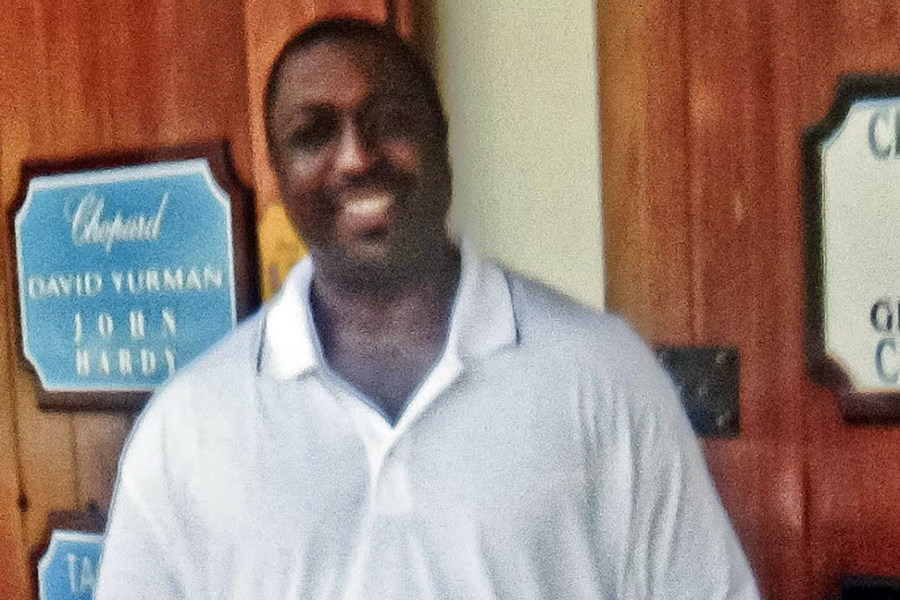Chokehold death: With plans for big march, some worry about a Ferguson repeat
| New York
Many are worried that the racial unrest in Ferguson, Mo., could erupt on the streets of New York this weekend, with a major protest march and rally scheduled to take place in Staten Island at the site of the sidewalk killing of Eric Garner allegedly at the hands of police.
The march, already planned by the Rev. Al Sharpton two weeks before the police shooting of unarmed teen Mike Brown in Ferguson, could draw more than 15,000 protesters to New York’s outer borough, drawing demonstrators both from the tri-state area and from across the United States.
Organizers of the march have been planning “justice caravans” of cars and buses, which will pick up protesters in Brooklyn and New Jersey on Saturday morning and bring them across the Verrazano Bridge to Staten Island. Other groups, including the United Federation of Teachers, are sending “action alert” e-mails to members, promising free transportation to the march and rally – an action that has roiled many leaders of the New York Police Department’s rank and file.
Originally, Mr. Sharpton hoped to march protesters themselves across the iconic bridge, but he backed down under pressure from city officials and police, opting for the caravan of vehicles instead. The rally will begin at the square where Mr. Garner was arrested and, after he resisted, was placed in an apparent chokehold, banned by department policy, that made him suffocate.
But since the police shooting of Mr. Brown in Ferguson, the significance of the protest march has grown exponentially – from a march against NYPD tactics and Garner’s death to a national protest of police violence against minorities. Brown’s family is expected to attend, joining the family of Garner and others who died at the hands of police.
“It's not only for my son, you know, it's for Michael Brown from Ferguson, Mo.," said Gwen Carr, Garner’s mother. “It could be for your son next, your husband next.”
“We're not going to start fighting and pushing each other and breaking windows,” Ms. Carr said at an event in Harlem last weekend. “We are going to show them we are bigger than that. We want the focus to stay on justice.”
So far, there has been little violence during New York protests, and Sharpton has repeatedly urged demonstrators in Ferguson to protest peacefully.
Saturday’s protest rally, dubbed the “We Will Not Go Back March” by Sharpton’s National Action Network, will start in the morning and end at 3 p.m. Most of the violence in Ferguson has occurred after dark, after the majority of peaceful protesters have left.
Still, rage continues to simmer among many restive, minority young men and others, and some leaders in New York have appeared to fan the flames.
“I want to give a warning to Mayor de Blasio, a warning to police Commissioner Bratton,” said former city council member Charles Barron during a small protest in front of NYPD headquarters in Manhattan on Monday. “Ferguson today; New York tomorrow.”
“We will not be the ones to blame when there’s an explosion in New York City,” continued former Councilman Barron, also a former member of the Black Panthers and other militant groups. “We’re not even going to be able to stop it, because the people are fed up, and the only thing you listen to is when there’s no more peace for you.”
Amid the Ferguson unrest, a growing number of semi-organized young militants, most from outside the region, have planned and coordinated the street violence. Among them are fringe groups reminiscent of the 1960s: the Revolutionary Communist Party and Revolution Club of Chicago, as well as the New Black Panthers Party, classified as a hate group by the Southern Poverty Law Center.
These young militants have been organizing via social media in Ferguson, observers say, and leaders in New York worry a small number could disrupt the march and rally on Saturday – or perhaps later in the evening.
Mayor de Blasio and some of his progressive allies appealed to Sharpton earlier this month, worrying the march could “tear New York City apart,” according to the New York Post. Thousands of NYPD officers will be on hand to keep the peace, as thousands of people come to, in effect, protest directly in front of them.
For the militants, the violence serves a purpose that peaceful protests cannot.
“The riot is the voice of the unheard,” Barron told protesters, speaking through a bullhorn Monday. “They can talk about those young people rising up in Ferguson, and doing what they think is necessary, all they want. But the president of the United States would not be addressing this issue if we were just peacefully marching and having a press conference.”







